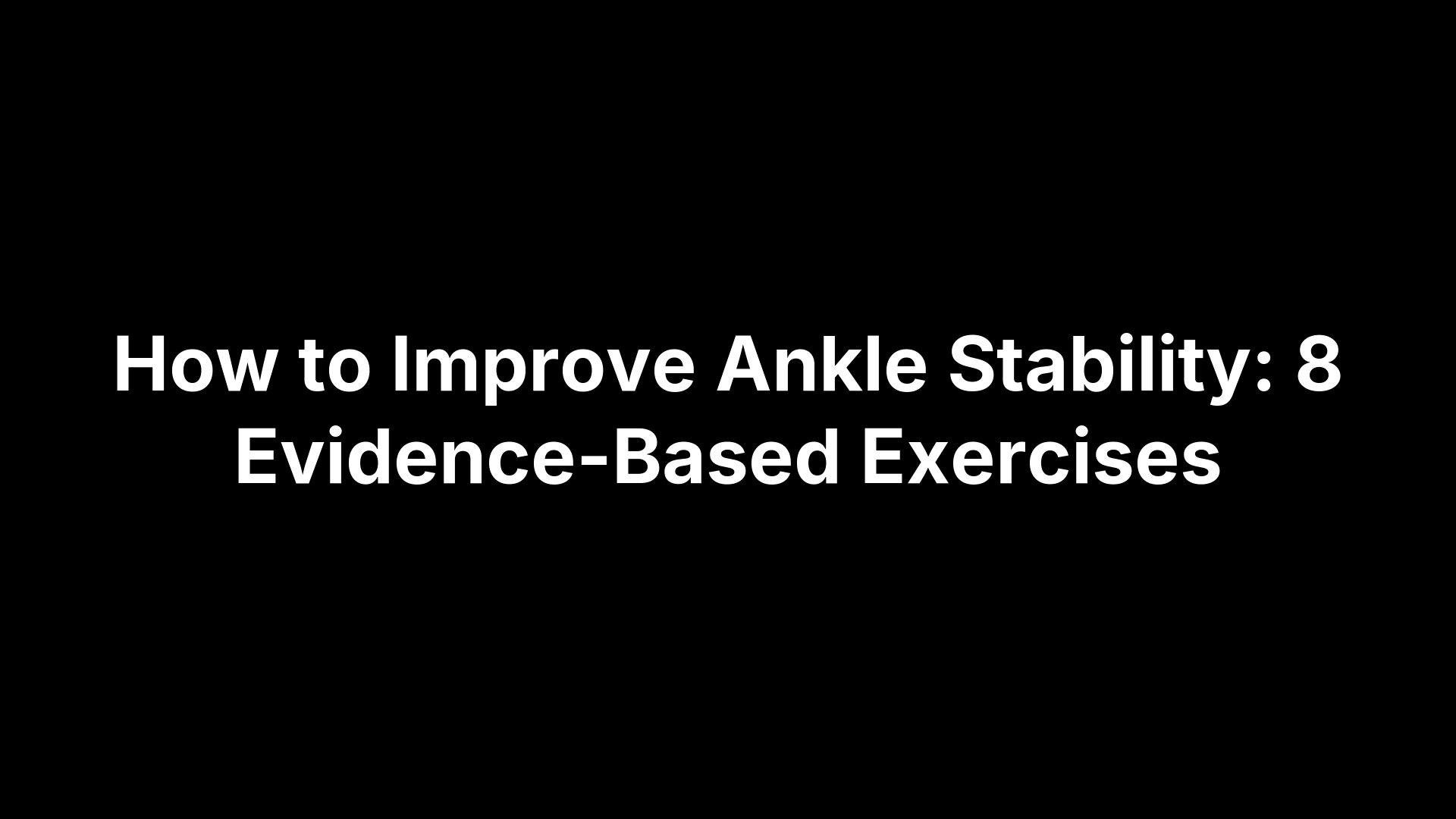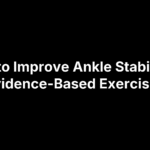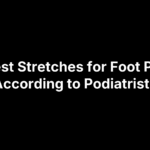Heel pain is any soreness under or behind your heel that makes every step feel stiff, sharp, or achy. The most common culprit is plantar fasciitis—irritation of the thick band of tissue along your arch—often felt with the first steps in the morning or after sitting. Other causes include Achilles tendinitis, a bruised heel pad, or a stress injury. The good news: most heel pain improves with simple, consistent home care and rarely needs surgery.
This guide shows you exactly how to get relief and get back on your feet. You’ll learn the key causes (and how to tell them apart), quick pain-calming tips you can use today, the most effective stretches and strengthening moves, what to wear on your feet, and helpful tools like night splints and taping. We’ll cover activity tweaks that speed healing, a realistic recovery timeline, red flags that warrant a podiatry visit, in-office options if home care isn’t enough, prevention strategies, and common pitfalls to avoid.
Common causes of heel pain (and how to tell them apart)
Where you feel the pain—and when it flares—often reveals the cause. Most heel pain comes from irritated soft tissues rather than bone, and your provider usually diagnoses it by exam; imaging is seldom needed at first. Pay attention to location (bottom vs. back of heel), morning “first-step” pain, recent activity, and shoe pressure points. Note: heel spurs on X-ray are common but often not the true source of pain.
- Plantar fasciitis: Underside near the heel/arch; worst with first steps or after sitting; hard surfaces aggravate.
- Achilles tendinitis: Back of heel; swelling/stiffness, especially in runners and jumpers; pain with activity.
- Heel pad bruise (contusion): “Stone bruise” tenderness; hurts when walking, especially on hard floors.
- Stress fracture: Persistent, focal pain that ramps up with weight-bearing; may ache on sides/back of heel.
- Bursitis/Haglund’s bump: Back-of-heel tenderness or a bony bump; rigid or high-heeled shoes make it worse.
- Kids (Sever’s disease): Ages 8–14 with running/jumping; pain at the back of the heel near the growth plate.
Quick relief you can try today
When a heel-pain flare hits, a few simple moves can dial down pain fast while you work on longer-term fixes. If you’re wondering how to relieve heel pain today, start with calm, cushion, and support.
- Ice it: Apply a cloth-covered ice pack for 15–20 minutes, 3–4 times today, or roll your foot over a frozen water bottle.
- Use OTC pain relief (if safe): Short courses of NSAIDs like ibuprofen/naproxen can reduce pain and inflammation.
- Rest and elevate: Cut high-impact steps; switch to low-impact (cycling, swimming) and prop your heel when sitting.
- Wear support, not slippers: Choose shoes with arch support and a cushioned, stable heel; avoid walking barefoot on hard floors.
- Tape for support: Athletic taping of the arch/heel can offload the plantar fascia during the day.
- Add a quick cushion: Try a gel heel cup or over-the-counter orthotic to reduce pressure under the heel.
Best stretches for plantar fasciitis and heel pain
Consistent, gentle stretching is one of the most effective ways to relieve heel pain, especially from plantar fasciitis. Focus on the calf, Achilles tendon, and the plantar fascia. Morning matters most because tissues tighten overnight. Aim for a comfortable pull, not sharp pain. Hold each stretch 15–30 seconds, do 2–3 sets, up to three times per day.
- Calf (gastrocnemius) wall stretch: Face a wall, hands at shoulder height. Step one foot back, knee straight, heel flat. Lean forward until you feel the upper-calf stretch.
- Bent-knee (soleus/Achilles) stretch: From the same stance, bend both knees slightly and shift forward to target the lower calf and Achilles.
- Seated plantar fascia stretch: Sit, cross the sore foot over the opposite knee. Pull the toes back toward your shin until you feel the arch stretch.
- Bonus calm-down: After stretching, gently roll a frozen water bottle under your arch for an ice massage to quiet irritation.
Strength and mobility exercises to support healing
After you calm a flare with rest, ice, and stretching, add gentle strengthening so your calves and lower-leg muscles can better support the arch and reduce strain on the plantar fascia and Achilles. Work slowly and with control, 3–4 days per week, right after a brief warmup or your stretch routine. Mild fatigue is fine; stop if you feel sharp, localized pain.
- Heel raises (calf strength): Hold a counter. Rise up for 2 seconds, then lower slowly for 3–4 seconds. Start double-leg; progress to single-leg as symptoms allow. Do 2–3 sets of 8–12 reps. The slow lowering builds resilience that helps relieve heel pain.
- Ankle inversion with resistance: Sit with a band around your forefoot. Turn your foot inward against the band, keeping the knee still. Control back to start. Do 2–3 sets of 10–15 reps per side to support the structures along the inside of the ankle and arch.
- Progression tips: Increase reps or band resistance gradually. Keep movements pain-free, and prioritize form over volume. If soreness lingers into the next day, reduce the dose.
Footwear and insoles: what to wear and what to avoid
Footwear is the fastest lever for calming heel pain. Many people improve simply by switching to supportive shoes and adding inserts that offload the heel and arch. If you’re wondering how to relieve heel pain quickly, use these smart “do’s and don’ts” whenever you’re on your feet (including at home).
-
Wear:
- Supportive shoes with firm arch support and cushioning.
- Low-to-moderate heel height; avoid dead-flat soles.
- Over-the-counter arch supports or gel heel cups.
- Fresh midsoles—replace worn-out shoes to maintain shock absorption.
-
Avoid:
- Flats, flip-flops, and unsupportive minimalist shoes.
- Walking barefoot on hard floors.
- High heels/pumps that rub the back of the heel.
- Any shoe that collapses through the arch.
Helpful home tools: night splints, taping, and ice rolling
A few home tools can quickly reduce heel pain when used consistently with supportive shoes and stretches. Keep them gentle and comfortable so you’ll actually use them—daily, small doses outperform occasional, aggressive sessions. Use these to complement your plan, not replace activity changes and strengthening.
- Night splints: Hold the foot near 90° overnight; wear nightly 2–4 weeks to reduce morning pain.
- Taping: Athletic taping supports the arch/heel; learn from a PT; replace daily.
- Ice rolling: Roll a frozen water bottle 5–10 minutes, or ice 15 minutes 3–4×/day (use a cloth barrier).
Activity tweaks that speed recovery
Smart load management is often the missing piece in how to relieve heel pain. Keep moving, but make it gentler while tissues calm down. Prioritize low-impact cardio, avoid hard surfaces when you can, wear supportive shoes even at home, and time short stretch breaks through the day to keep the calf–Achilles–plantar fascia unit supple.
- Swap impact: Pause running, jumping, and HIIT; choose swimming, cycling, or elliptical.
- Pick soft ground: Favor tracks, turf, or trails over concrete; avoid hills and stairs early on.
- Break up standing: Sit intermittently; use cushioned mats if you must stand on hard floors.
- Keep shoes on indoors: Supportive house shoes beat barefoot on tile or wood.
- Micro-breaks: Do brief calf and plantar fascia stretches after waking, after sitting, and post-activity.
- Rebuild gradually: When symptoms ease, increase walking or running time slowly and stop short of a pain flare.
Recovery timeline: how long heel pain takes to heal
Most heel pain improves with steady, conservative care. For plantar fasciitis, many notice early gains over the first 2–4 weeks as you stretch, support your feet, and reduce impact; average recovery is 3–6 months. Ice, NSAIDs, and night splints can provide short-term relief, sometimes in days, but consistency matters. Achilles-related pain often needs a longer runway and supervised rehab. If pain doesn’t improve after a few weeks or keeps you from walking, it’s time to be seen.
Red flags: when to see a podiatrist
Most heel pain settles with home care, but some symptoms warrant prompt evaluation to prevent complications like tendon rupture or stress fracture. If any of the following apply, schedule an appointment soon.
- No improvement after 2–3 weeks of rest, ice, support, and OTC meds.
- Pain that limits walking or any inability to bear weight.
- Marked swelling, stiffness, or visible deformity around the heel.
- Sudden sharp pain or a “pop” at the back of the heel (possible Achilles injury).
- Pinpoint heel pain after a jump in mileage/impact (possible stress fracture).
In-office treatments if home care isn’t enough
If pain persists after 2–6 weeks of diligent home care, a podiatrist can escalate care to calm inflammation, offload tissue, and spur healing. They’ll examine your foot and may use imaging to rule out a stress fracture or tendon tear.
- Physical therapy: Targeted stretching/strengthening, manual therapy, and athletic taping.
- Custom orthotics/footwear tuning: Offload the heel; consider a night splint for morning pain.
- Short-term immobilization: A walking boot to rest stubborn, severe flares.
- Image-guided options: Limited corticosteroid for plantar fasciitis/bursitis (not Achilles), platelet-rich plasma (PRP), extracorporeal shock wave therapy, or minimally invasive ultrasound-guided tissue debridement. Surgery is rare and reserved for refractory cases.
Prevention tips to keep heel pain from returning
Once you’re walking without a wince, cement habits that keep the plantar fascia, Achilles, and calves flexible—and your daily loads reasonable. Prevention largely mirrors what works when you’re figuring out how to relieve heel pain: consistent stretching, smart footwear, and gradual activity progressions. Keep support on your feet at home, favor softer surfaces when possible, and listen for early twinges so you can act before a full flare.
- Stretch daily: Calf, Achilles, and plantar fascia stretches—especially in the morning.
- Keep strength work: Heel raises and ankle band work 2–3 days per week.
- Choose supportive shoes: Firm arch support, cushioned heel, low-to-moderate heel height; replace worn-out pairs.
- Skip barefoot on hard floors: Avoid flats/flip-flops and high heels that irritate the back of the heel.
- Use inserts if needed: OTC arch supports or gel heel cups when mileage or standing increases.
- Progress activity gradually: Cross-train; add distance, speed, and hills slowly.
- Manage body weight: Reduces stress on the plantar fascia.
- Act fast on early soreness: Short rest, ice, taping, and a night splint during short flares.
Common mistakes that slow your recovery
Even diligent patients can stall progress with a few small missteps. Heel pain calms when you pair consistent stretching with smart load management and supportive footwear. If you’ve plateaued, scan for these common errors and tighten up your routine so each step moves you forward, not back.
- Barefoot on hard floors: Choose supportive house shoes instead.
- Flats or worn-out shoes: Use firm arch support; replace old pairs.
- Inconsistent stretching: Skip days, and morning pain persists.
- Too much, too soon: Early hills, speed, or jumping re-irritate tissue.
- Rest-only mindset: Add gradual strengthening to build resilience.
- Stretching into sharp pain: Keep it gentle; avoid aggressive holds.
- Relying only on meds/ice: Fix mechanics, footwear, and activity load.
- Waiting too long for care: No improvement in weeks? See a specialist.
Next steps
Start today: pick supportive shoes, add the stretches and heel raises, ice after activity, and swap high-impact for low-impact for two weeks. If pain still limits your day, or you can’t bear weight comfortably, it’s time for expert help. Our podiatry team offers same-day appointments and comprehensive, conservative-to-surgical care across Central Virginia. Book your visit with Achilles Foot and Ankle Center and take the next step toward pain-free walking.






